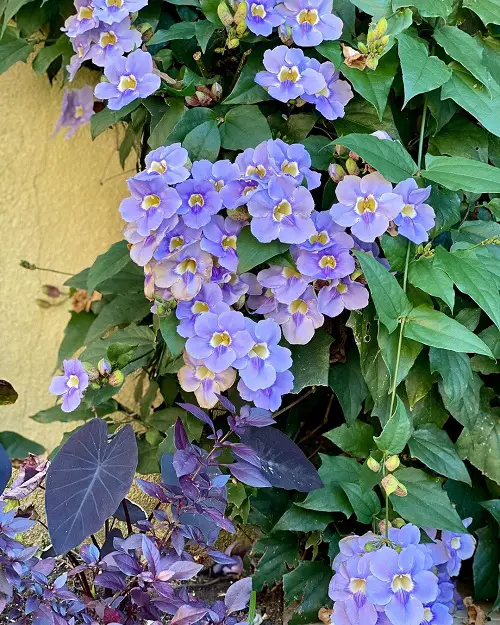Want to make your garden more pollinator-friendly? Grow these Climbing Plants and Vines that Attract Butterflies!
Butterflies are drawn to the scent of nectar, fragrant blossoms, and bright, bold colors. So, if you’re building a garden to tempt these stunning pollinators, it has to be one with extraordinary foliage and sweet fragrances, and these Climbers and Vines are exactly that.
Climbing Plants and Vines That Attract Butterflies
1. Passionflower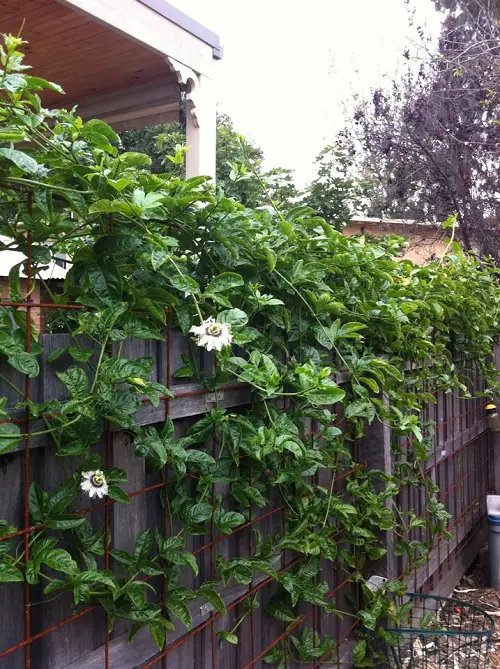
Botanical Name: Passiflora spp.
USDA Zones: 5 – 11
Butterflies are crazy for passionflowers! These vines produce stunning, fragrant flowers with long, wavy tendrils in shades of blue and purple, encircled by five sepals and petals in pink and white. They bloom only for a day, and butterflies use them as a food source and the plant as a place to lay their eggs. These vines grow well if you provide well-draining soil and provide part shade.
2. Pipevine

Botanical Name: Aristolochia macrophylla
USDA Zones: 5 – 11
Also called the Dutchman’s Pipe, this vine produces very unique yellowish-green flowers with brownish-purple lobes, resembling a Dutch smoking pipe! These sweet-smelling flowers attract insects and trap them in a tube overnight.
The flower produces extra pollen and then releases the pollen-covered insects in the morning. With black and shimmery blue wings, Pipevine Swallowtail butterflies use this climbing vine as their host and get their name from it. The plant does well both in full sun and partial shade.
3. Virginia Creeper
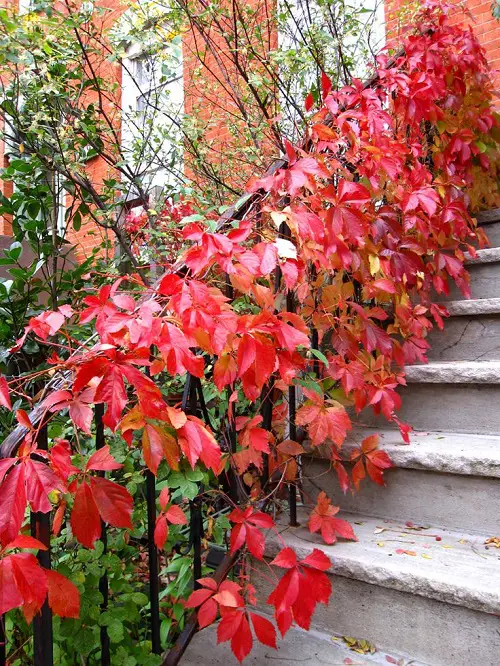
Botanical Name: Parthenocissus quinquefolia
USDA Zones: 3 – 9
Attracting over a dozen moth species, Virginia Creeper is an abundant food source for numerous butterflies, insects, songbirds, and wildlife. Its flowers contain nectar and pollen, and its fruits are eaten by several animals, spreading its seeds in multiple ways. Its bright fall foliage also provides excellent shelter for various insects, including butterflies. This climber is easy to care for in both sunny and shady spots.
4. Virgin’s Bower
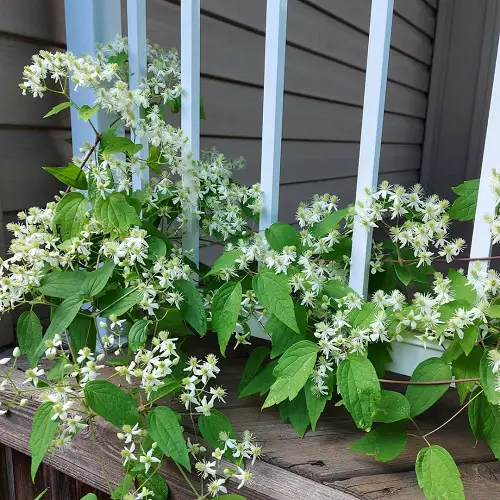
Botanical Name: Clematis virginiana
USDA Zones: 3 – 9
Abundant clusters of fragrant white flowers typically bloom from late summer till fall, giving way to silky seed heads. These showy, aromatic flowers attract butterflies and are a magnet for other pollinators like bees, wasps, moths, and hummingbirds.
5. Carolina Jessamine
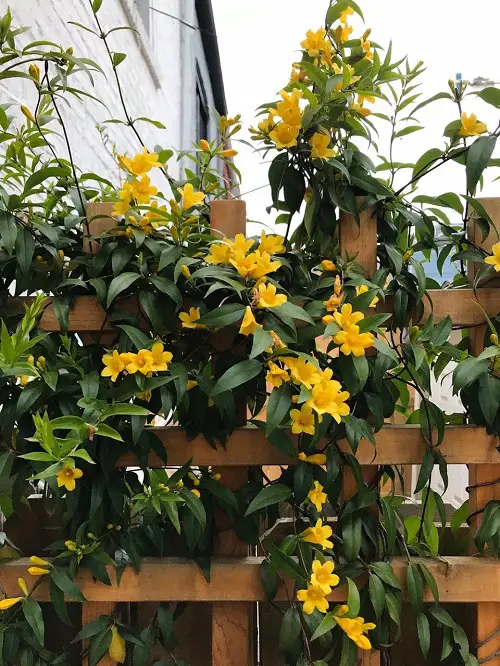
Botanical Name: Gelsemium sempervirens
USDA Zones: 6 – 10
Carolina Jessamine attracts hummingbirds, butterflies, and a variety of bees and pollinators with its sweet-scented, light-yellow flowers. Toxic to humans, and supposedly even to honeybees, you will find songbirds and small mammals feeding on its seeds. While it will tolerate some shade, plant Carolina Jessamine in full sun for maximum flowering.
6. American Wisteria

Botanical Name: Wisteria frutescens
USDA Zones: 5 – 9
The aromatic blooms of American Wisteria attract butterflies and other native pollinators. It is also a larval host to the Long-Tailed Skipper butterfly. Its lilac-purple, two-lipped flowers bloom densely clustered and thrive best under full sun. Unlike its Japanese and Chinese cousins that grow into gigantic vines, the American variety grows as a shorter version with compact, round flower clusters.
7. Crossvine

Botanical Name: Bignonia capreolata
USDA Zones: 5 – 10
Crossvine is a fast, vigorous grower that can rapidly cover a vertical surface. It is the best climber if you want to cover a large space like a pergola as quickly as possible. This plant is an excellent nectar source for hummingbirds and butterflies.
8. Trumpet Creeper
Botanical Name: Campis radicans
USDA Zones: 4 – 11
This plant’s tubular flowers produce abundant nectar, easily attracting butterflies and hummingbirds. The Trumpet Creeper grows well in wet to dry soils and blooms in full sun. Being a vigorous grower, care should be taken when planting this as it can become an invasive weed in favorable climate, for slow-growing plants.
9. Coral Honeysuckle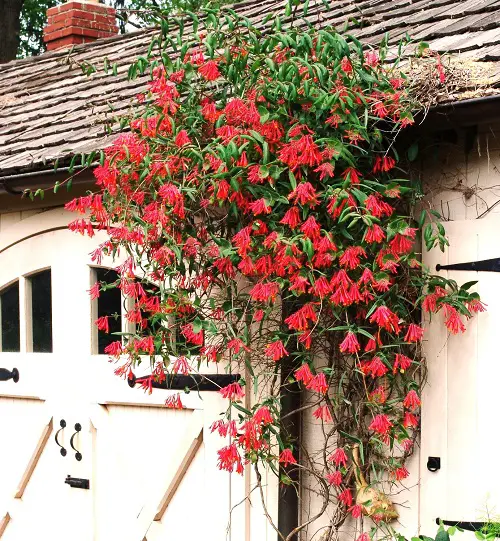
Botanical Name: Lonicera sempervirens
USDA Zones: 4 – 10
Also called Trumpet Honeysuckle, this vine has bright red, tubular flowers. These flower clusters emerge on new growth in spring and summer and are known to attract hummingbirds and butterflies for months before maturing into berries. Don’t forget to support them with a honeysuckle trellis.
10. Climbing Hydrangea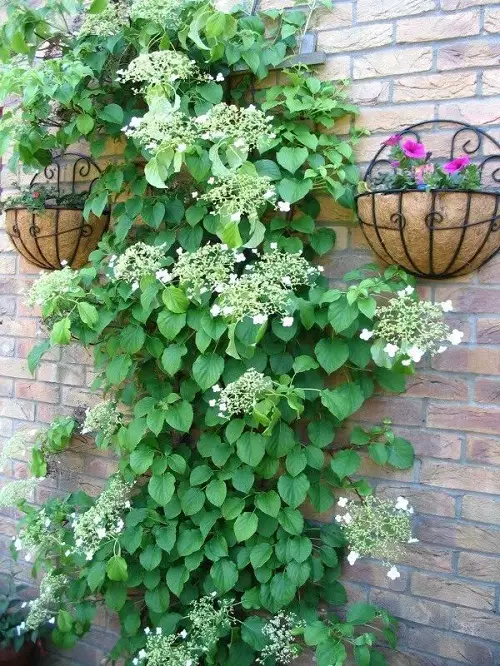
Botanical Name: Hydrangea petiolaris
USDA Zones: 4 – 8
Climbing Hydrangea is another vine that attracts butterflies. It has beautiful, fragrant, white lace-cap flowers that bloom from mid spring to late fall and can thrive in both sun and shade. You can train it to cover walls, fences, and even large trees.
11. Blue Sky Vine
Botanical Name: Thunbergia grandiflora
USDA Zones: 8 – 11
Blue Sky Vine is a stunning, vigorous climber with large, trumpet-shaped, sky-blue flowers that become slightly white before they fade. These flowers have a yellow throat and are highly attractive to butterflies and other pollinators due to their nectar. This vine is perfect for quickly covering trellises, arbors, or fences, providing a green backdrop and beautiful blooms in a frost-free climate.



